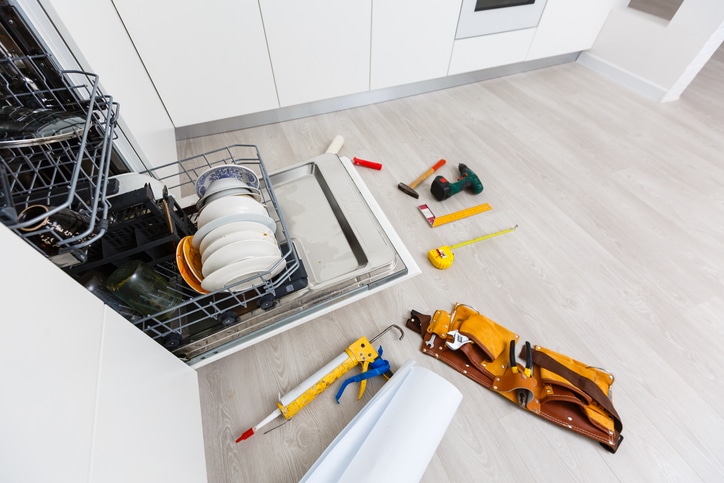A clogged kitchen sink drain can be a frustrating and inconvenient problem that we often encounter here in the Dallas-Fort Worth Metroplex. Unclogging the kitchen sink can disrupt your daily routine, thanks to food scraps, grease buildup, or foreign objects finding their way down the drain. Fortunately, with the proper knowledge and tools, you can tackle this issue and restore your kitchen sink to its optimal functionality. In this guide, Total Plumbing breaks down the steps to unclog a kitchen sink drain in your Dallas-Fort Worth kitchen and discusses when it’s time to call a professional plumber.
Gather Your Tools and Materials
Before you begin the unclogging process, assembling the necessary tools and materials is essential. You’ll need:
- Plunger
- Plumber’s snake (also known as a drain auger)
- Bucket
- Rubber gloves
- Baking soda
- Vinegar
- Boiling water
- Wrench (for removing the P-trap, if necessary)
- Towels or rags
Having these items on hand will make the process smoother and more efficient.
Safety First
Always prioritize safety when dealing with plumbing issues. Start by turning off the water supply to your sink. You can typically find the shut-off valves beneath the sink. This step will prevent any water from flowing into the sink while you work on unclogging it.
Try the Plunger
A plunger is often the first line of defense against a clogged kitchen sink drain. Here’s how to use it effectively:
- Fill the sink with enough water to cover the plunger’s cup.
- Position the plunger over the drain and press it down firmly to create a seal.
- Pump the plunger vigorously up and down for about 20-30 seconds.
- Release the plunger and check if the water starts to drain. If not, repeat the process a few times.
Use a Plumber’s Snake
If the plunger doesn’t do the trick, it’s time to try a plumber’s snake. Follow these steps:
- Insert the snake into the drain until you feel resistance.
- Rotate the snake’s handle clockwise while gently pushing it further into the drain.
- Continue to feed the snake into the drain until you encounter the clog.
- Once you reach the clog, rotate the snake to break it apart or hook it.
- Slowly retract the snake, pulling the clog out of the drain.
Try a Natural Solution
If the clog persists, you can try a natural solution using baking soda and vinegar:
- Pour about half a cup of baking soda down the drain.
- Follow it with a cup of vinegar.
- Let the mixture sit for 15-30 minutes.
- Flush the drain with boiling water.
The chemical reaction between the baking soda and vinegar can help break down clogs and eliminate foul odors.
Inspect and Clean the P-Trap
If the clog is still stubborn, you may need to inspect and clean the P-trap, a U-shaped pipe beneath the sink. Remember to place a bucket underneath to catch any water and debris when you remove it. Use a wrench to loosen and remove the P-trap, then clean it thoroughly. Reassemble the P-trap once it’s clean and secure.
When To Call a Plumber
It’s essential to know when to call a plumbing professional for assistance. While many kitchen sink drain clogs can be resolved using the steps mentioned in this guide, there are situations where professional help is warranted, especially from a plumbing expert who can troubleshoot your Dallas-Fort Worth home’s plumbing problems.
Here’s when you should consider reaching out to a plumbing expert:
- Persistent Clogs: If you’ve tried the DIY methods mentioned above, including plunging, using a plumber’s snake, and natural solutions, but the clog persists or returns shortly after clearing, it may be a sign of a more significant underlying issue in your plumbing system.
- Foul Odors: Lingering unpleasant odors from your kitchen sink drain, even after unclogging, could indicate a problem further down the line, such as a damaged or improperly vented drainpipe. This is a situation where professional assessment is crucial.
- Multiple Clogged Fixtures: If multiple fixtures in your home (e.g., bathroom sinks, toilets, or showers) are experiencing drainage problems simultaneously, it could be a sign of a blockage or issue in your main sewer line. This is a complex problem that requires the expertise of a licensed plumber.
- Slow Drainage in Multiple Sinks: If you notice slow drainage in several sinks throughout your home, it might indicate a more extensive plumbing issue. A professional can diagnose the problem and recommend the appropriate repairs or replacements.
- No Water Flow at All: If your kitchen sink is completely blocked, with no water flowing whatsoever, it could be due to a severe clog or a more complex issue within the plumbing system. Attempting to fix this without proper knowledge can lead to further damage.
- DIY Attempts Causing Damage: Sometimes, well-intentioned DIY attempts can inadvertently damage your plumbing system, worsening the problem. If you suspect this has occurred or are struggling to perform DIY attempts correctly, it’s best to call a professional to assess and rectify the situation.
In these situations, contacting a licensed and experienced plumbing professional, like the experts at Total Plumbing, is the wisest course of action. They have the knowledge, tools, and expertise to diagnose and address complex plumbing issues effectively and ensure the long-term functionality of your kitchen sink and plumbing system. Remember that timely intervention can prevent more significant problems and save you both time and money in the long run.
Conclusion
Unclogging a kitchen sink drain in your Dallas-Fort Worth home doesn’t have to be a daunting task. Following the steps outlined in this guide, you can effectively unclog your kitchen sink and restore it to proper working condition. Remember to prioritize safety, use the right tools, and consider natural solutions before resorting to more extensive measures. If all else fails, or you’re unsure about DIY attempts, don’t hesitate to contact a professional plumbing service like Total Plumbing for expert assistance in resolving the issue.



